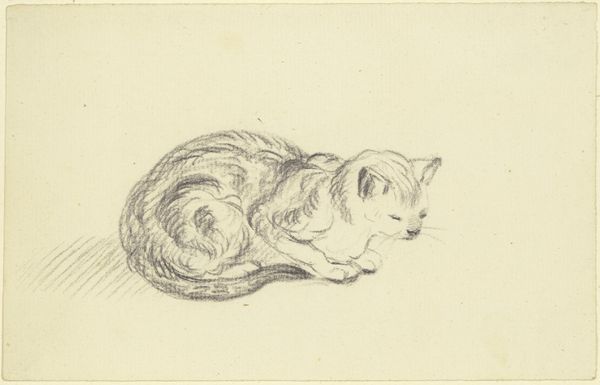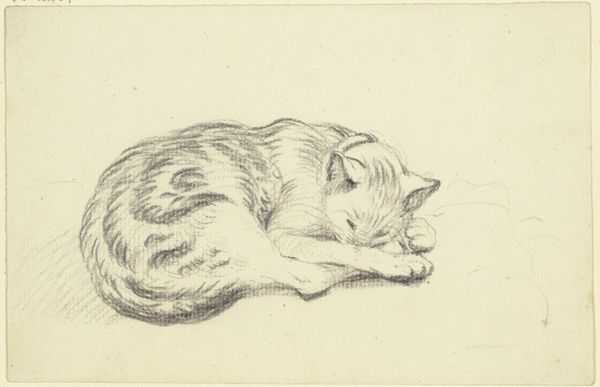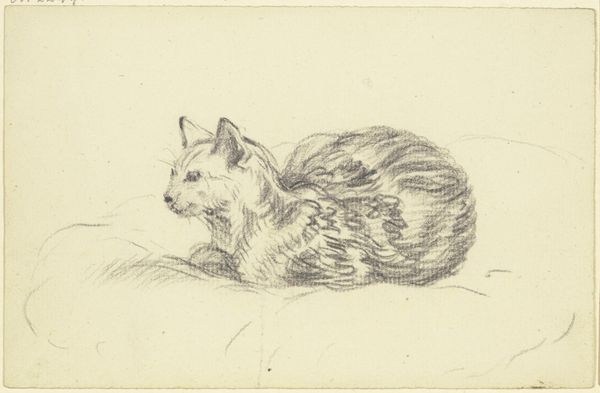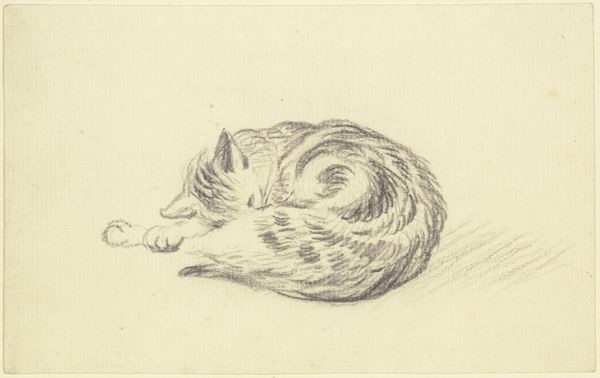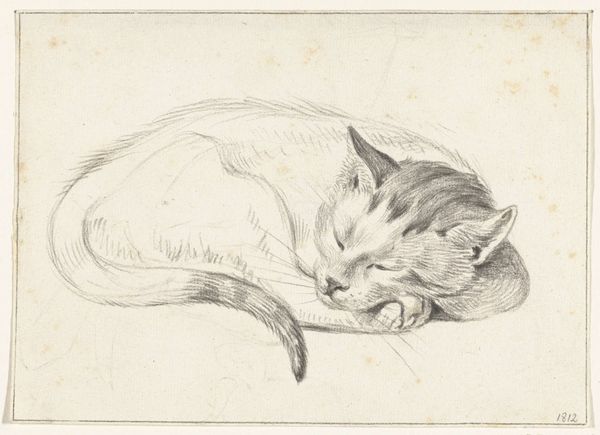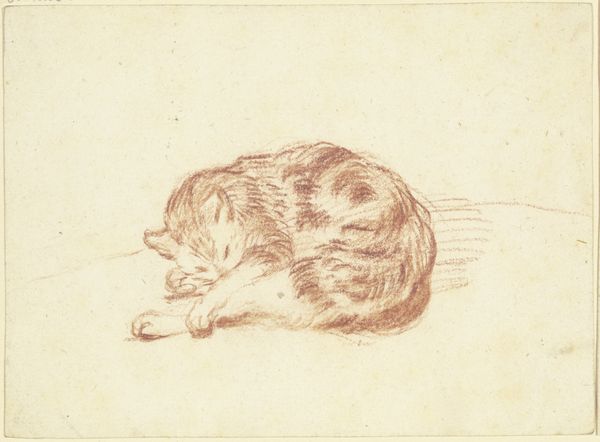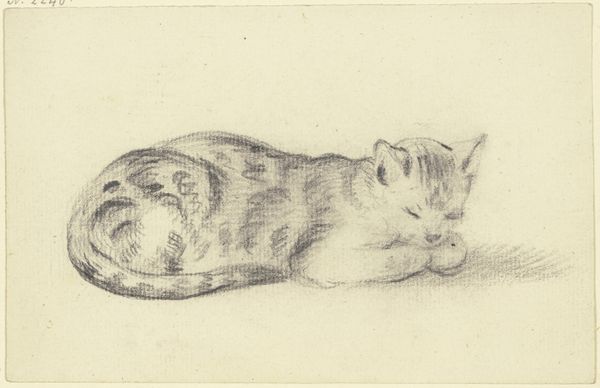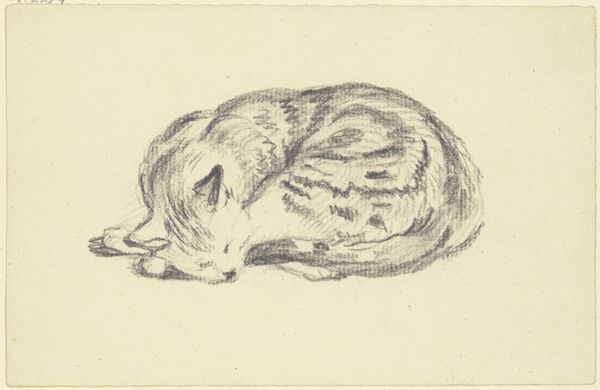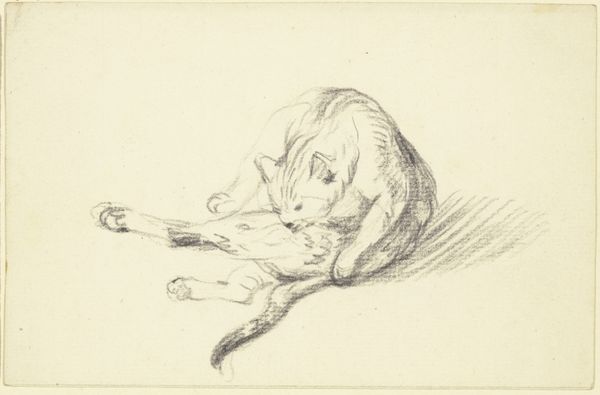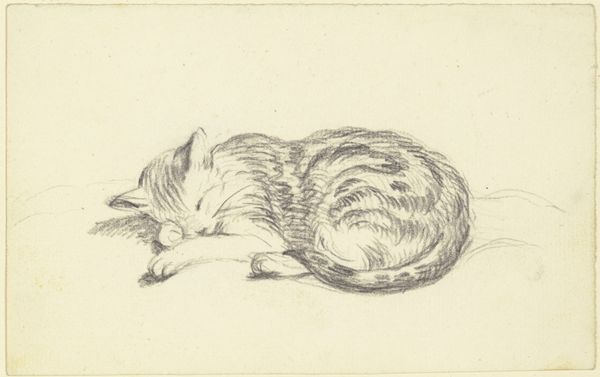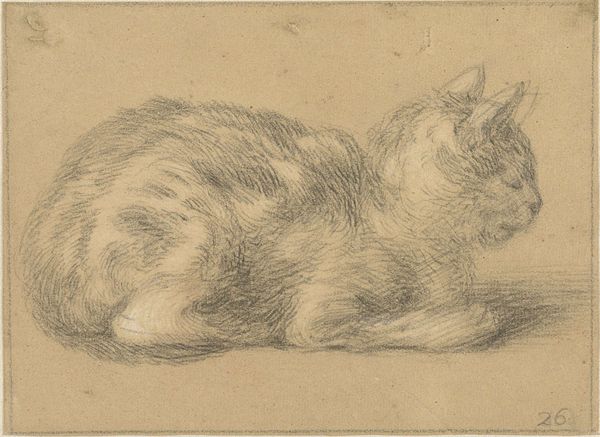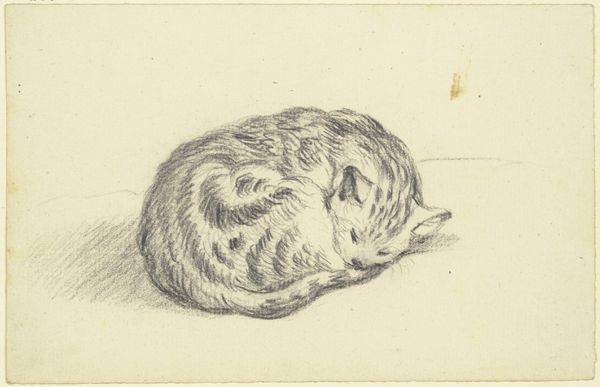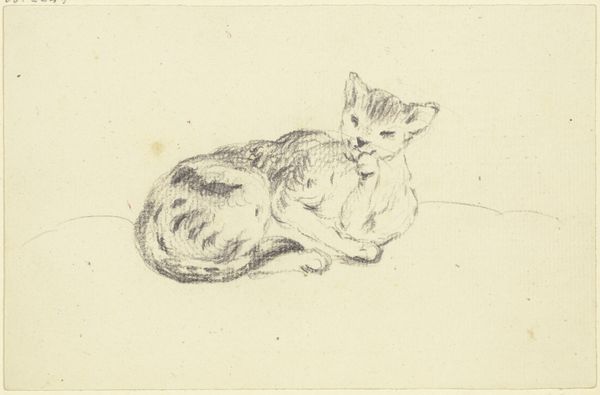
drawing, pencil, chalk
#
portrait
#
drawing
#
pencil sketch
#
figuration
#
pencil
#
chalk
#
realism
Copyright: Public Domain
Editor: So, this charming piece is "Sleeping Cat," a pencil and chalk drawing located here at the Städel Museum by Friedrich Wilhelm Hirt, although we don’t know exactly when it was created. There’s a real sense of intimacy in the work, seeing the cat so relaxed. How would you interpret it? Curator: I find it interesting how Hirt chooses to depict a cat, a domestic animal, through the traditionally "high art" mediums of drawing. In his time, what was the dominant cultural perception of the middle-class home? Do you think images like this helped construct or reflect that view? Editor: That's an interesting angle! I hadn’t thought about the domestic space being "constructed" through images of pets. Perhaps, it suggested order, comfort... safety? Curator: Exactly. The act of sketching a cat elevates the mundane. The rise of museums and public art spaces gave everyday people access to art forms previously reserved for elites, fostering a sense of cultural participation and belonging. How does depicting such a common animal humanize the artist? Editor: It’s definitely more relatable than, say, a portrait of royalty. You feel you’re getting a glimpse into Hirt's everyday life, his surroundings. Almost like a snapshot before photography. Curator: Yes! These artistic choices, when seen within their social context, tell us a lot about the artist, the audience, and how visual language helped to shape their world. Do you think this sketch, in its realism, comments on the formal conventions that predated it? Editor: I think seeing something depicted realistically made art a little more approachable for ordinary people, possibly challenging older, more stylized, aristocratic forms. It all becomes more relevant once you put it in the social landscape of the time. Curator: Absolutely. Looking at "Sleeping Cat" through that lens highlights the quiet revolution taking place in art and society during the era.
Comments
No comments
Be the first to comment and join the conversation on the ultimate creative platform.
